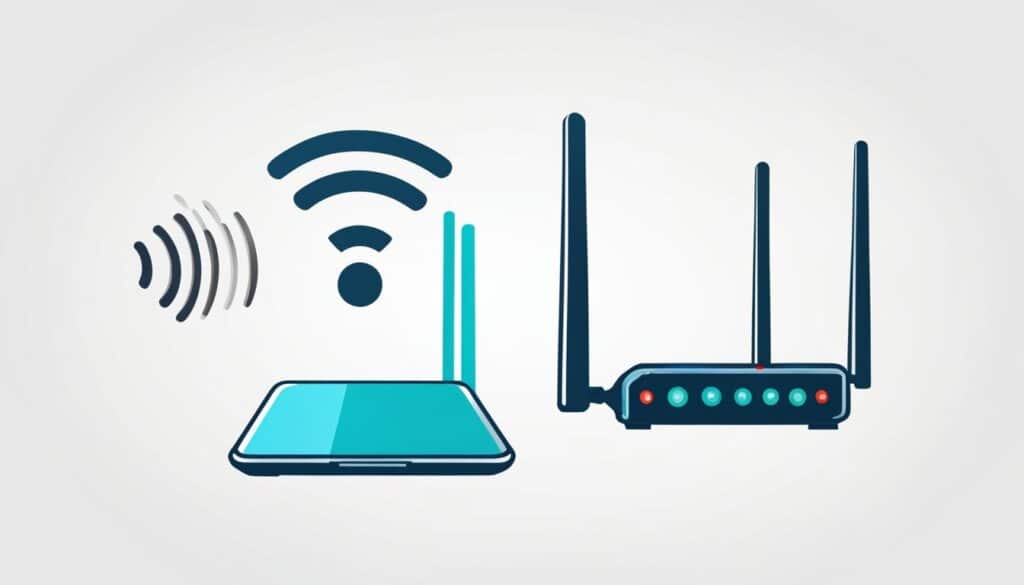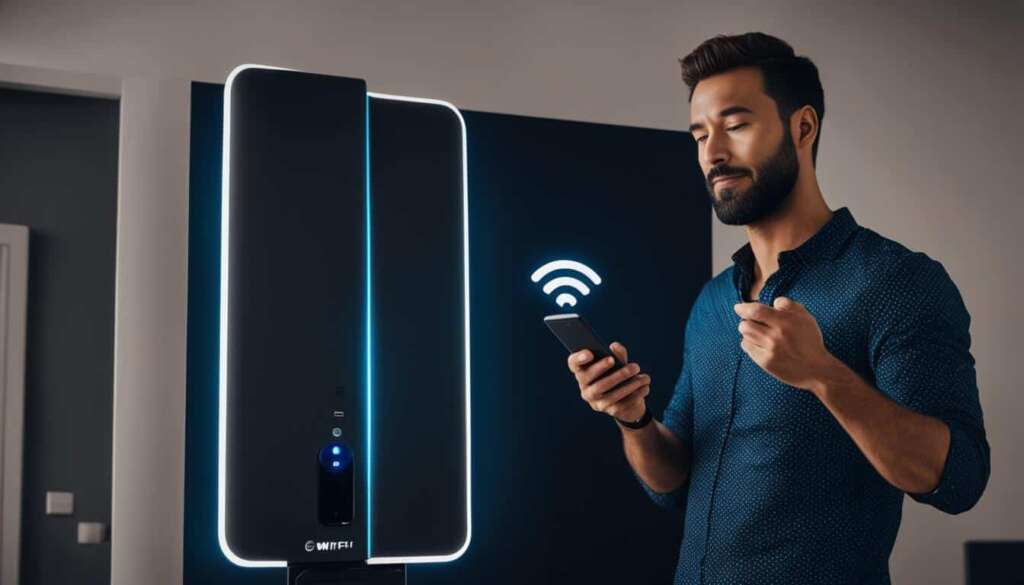Table of Contents
Wi-Fi calling is an increasingly popular feature offered by major carriers and phone manufacturers. It allows you to make voice calls and send messages using a Wi-Fi network instead of relying solely on a cellular network. This comprehensive FAQ guide will help you understand the benefits and functionality of Wi-Fi calling, providing answers to common questions and shedding light on its importance in today’s connected world.
Wi-Fi calling works like a regular phone call, utilizing your phone’s native dialer and regular phone numbers. It can be particularly advantageous in areas with weak cellular coverage or inside buildings with poor reception. Moreover, Wi-Fi calling presents a cost-effective solution when traveling internationally, enabling you to stay connected without incurring exorbitant roaming charges.
Not only do major carriers and phone manufacturers support Wi-Fi calling, but there are also third-party apps like Skype and WhatsApp that offer similar services. With Wi-Fi calling becoming more prevalent, it is now included as a standard feature on many smartphones, ensuring widespread accessibility.
Continue reading this FAQ guide to delve deeper into the world of Wi-Fi calling, gaining valuable insights into its importance, functionality, and the pros and cons that accompany its use.
What is Wi-Fi Calling and Why is it Important?
Wi-Fi calling is an essential feature that allows users to make calls and send messages using a Wi-Fi network instead of relying solely on a cellular network. This technology is particularly valuable in areas with weak or no cellular coverage, ensuring that users can stay connected even when they are in remote locations or buildings with poor reception. By leveraging Wi-Fi networks, individuals can overcome the limitations of cellular signals and maintain constant communication.
At its core, Wi-Fi calling utilizes Voice over Internet Protocol (VoIP) technology, which has been widely used by popular apps such as Skype and WhatsApp for years. This technology converts voice signals into digital data and transmits them over the internet, enabling seamless voice calls and messaging without the need for traditional cellular connections.
Wi-Fi calling provides an innovative solution that is built directly into your phone’s native dialer, eliminating the need to download additional apps. This convenience ensures that Wi-Fi calling is readily accessible to users without any additional steps or requirements.
In addition to its ease of use, Wi-Fi calling offers several important benefits. One of the key advantages is the ability to overcome the limitations imposed by weak cellular coverage. When travelling to remote locations or encountering areas with poor reception, individuals can rely on Wi-Fi networks to stay connected and communicate effectively.
Moreover, Wi-Fi calling is an excellent solution for individuals living or working in buildings with limited cellular signal penetration. By leveraging existing Wi-Fi networks, users can bypass the challenges posed by physical obstructions and enjoy uninterrupted communication.
Another significant advantage of Wi-Fi calling is the cost-effectiveness it offers, particularly for international travellers. By utilizing Wi-Fi networks, individuals can place calls and send messages without incurring expensive roaming charges that can quickly accumulate while abroad.
Overall, Wi-Fi calling is a convenient and crucial feature for modern communication. Its ability to provide reliable connectivity in areas with weak cellular coverage and its cost-effective international roaming capabilities make it an indispensable tool for staying connected at all times, regardless of location or network limitations.
Now that we understand the importance of Wi-Fi calling, let’s delve into how this technology actually works and the underlying mechanisms that enable it to function seamlessly.
How Does Wi-Fi Calling Work?
Wi-Fi calling is a technology that routes voice calls and messages over a Wi-Fi network rather than a cellular network. This allows you to make calls and send messages using a Wi-Fi connection, even in areas with weak or no cellular coverage.
When you initiate a call or send a message, your phone automatically searches for the strongest available network, whether it’s cellular or Wi-Fi. If your phone is connected to a Wi-Fi network with a stronger signal than the available cellular network, it will use the Wi-Fi network for the call.
Wi-Fi calling utilizes Voice over Internet Protocol (VoIP) technology. VoIP converts your voice into digital data and transmits it over the internet. It seamlessly integrates with your phone’s native dialer, making it easy to use without the need for additional apps or software.
One of the key advantages of Wi-Fi calling is that it allows you to make calls and send messages without using your cellular data plan. Instead, it utilizes your Wi-Fi connection, which can result in cost savings, especially when making international calls or roaming abroad.
“Wi-Fi calling is a game-changer for individuals who face poor cellular coverage in their homes or offices. It provides a reliable and convenient alternative to traditional voice and messaging services, improving connectivity and communication.”
Benefits of Wi-Fi Calling
- Expanded coverage: Wi-Fi calling enables you to stay connected in areas with weak or no cellular signal by utilizing Wi-Fi networks.
- Cost savings: Making calls and sending messages over Wi-Fi can help you avoid expensive roaming charges or international calling fees.
- Seamless integration: Wi-Fi calling works seamlessly with your phone’s native dialer, eliminating the need for additional apps or complicated setups.
- Improved call quality: Wi-Fi networks often offer better call quality compared to cellular networks, resulting in clearer conversations.
- Reliable connection: In settings where cellular signals are unreliable, such as large buildings or remote locations, Wi-Fi calling provides a more stable connection.

| Wi-Fi Calling | Traditional Cellular Calling |
|---|---|
| Utilizes Wi-Fi networks for voice calls and messages | Relies solely on cellular networks for voice calls and messages |
| Allows making calls without consuming cellular data | Uses cellular data or minutes from your plan |
| Can extend coverage in areas with weak or no cellular signal | Limited to the reach of the cellular network |
| Seamlessly integrates with your phone’s native dialer | May require additional apps or software |
Pros and Cons of Wi-Fi Calling
Wi-Fi calling offers several advantages for users. Firstly, it serves as a backup solution in areas with weak cellular coverage, ensuring that you can make calls and send messages even when the signal is poor. This is particularly beneficial when you find yourself in remote or rural areas where the cellular network may be limited. Additionally, Wi-Fi calling eliminates the need to install additional apps on your device, as it is built into your phone’s native dialer. This means you can easily make calls and send messages using your regular phone number.
Another advantage of Wi-Fi calling is its international roaming capabilities. By using Wi-Fi networks, you can make calls and send messages abroad without incurring high roaming charges. This can be a significant cost-saving option for frequent travelers or those who frequently communicate with international contacts.
However, it’s essential to consider the limitations of Wi-Fi calling. In crowded public settings where Wi-Fi networks are heavily used, signal strength may be inconsistent and unreliable. Additionally, Wi-Fi calling is dependent on carrier support, and older devices may not be compatible. Furthermore, if your phone loses its Wi-Fi connection, using Wi-Fi calling may consume your mobile data. Therefore, it’s crucial to monitor your data usage to avoid unexpected charges.
FAQ
What is Wi-Fi Calling?
Wi-Fi calling allows you to make voice calls and send messages using a Wi-Fi network instead of a cellular network. It works like a regular phone call, using your phone’s native dialer and regular phone numbers.
Why is Wi-Fi Calling Important?
Wi-Fi calling is important because it allows you to make calls and send messages in areas with weak or no cellular coverage. It is especially useful when you’re traveling to remote locations or when you’re in a building with poor reception. With Wi-Fi calling, you can stay connected even when there is no cellular signal.
How Does Wi-Fi Calling Work?
Wi-Fi calling works by routing your voice calls and messages over a Wi-Fi network instead of a cellular network. When you make a call or send a message, your phone automatically connects to the strongest available network, whether it’s cellular or Wi-Fi. Wi-Fi calling uses the Voice over Internet Protocol (VoIP) technology, which converts your voice into digital data and sends it over the internet.
What are the Pros and Cons of Wi-Fi Calling?
Wi-Fi calling has several advantages, such as providing a backup solution in areas with weak cellular coverage, allowing you to make calls and send messages without installing additional apps, and providing a more reliable connection from home. It also offers international roaming capabilities, allowing you to make calls and send messages abroad without incurring high roaming charges. However, Wi-Fi calling may have limitations, such as unreliable signal strength in public settings where Wi-Fi networks are crowded and not always available. It also depends on carrier support, and some older devices may not be compatible with Wi-Fi calling. Additionally, using Wi-Fi calling may consume your mobile data if your phone loses Wi-Fi connection, so it’s important to keep an eye on your data usage.













